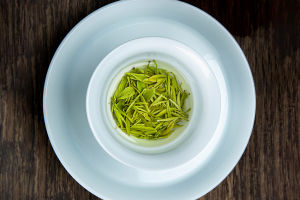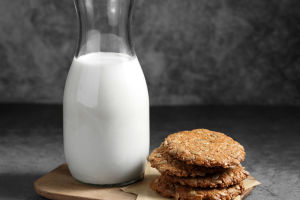Scientific evidence has increasingly highlighted the potential health benefits of tea consumption, ranging from anti-aging and anti-dementia properties to enhanced immunity and cancer prevention.
However, while numerous positive studies extol the virtues of "hot tea," Dr. Wu Zhixing, an attending physician at Chengdu University Hospital's Department of Family Medicine, cautions that these findings are primarily based on hot tea consumption.
Other forms of tea, such as cold-brewed, overnight steeped, or iced cold bubble teas, while not necessarily harmful, cannot guarantee the same health benefits.
Dr. Wu Zhixing, an avid researcher in clinical tea studies, underscores that much of the research focuses on green tea extraction to determine the optimal concentration of tea polyphenols.
These studies often investigate its impact on tumor reduction in animals or its positive effects on various health conditions—all centered around the consumption of hot tea rather than its cold counterparts.
One notable study from 2000, examining tea-drinking habits and bone density, revealed that individuals who habitually consumed tea for over a decade exhibited 2% to 6% higher bone density compared to the general population, potentially reducing the risk of fractures.
Dr. Wu explains that while tea contains caffeine, which may not be beneficial for bone mass, it also contains flavonoids and tea polyphenols that can counteract bone loss and promote cellular activity.
Moreover, extensive analyses have demonstrated a correlation between tea consumption and improved health markers. Individuals who consume more tea tend to have lower blood pressure, reduced blood lipid and cholesterol concentrations, and enhanced glucose metabolism.
Additionally, tea consumption has been associated with lower uric acid production, benefiting individuals with diabetes and gout. Furthermore, tea's fluoride content contributes to oral health by maintaining oral bacteria balance and offering anti-inflammatory and sterilization effects.
Tea can be categorized based on its degree of fermentation, which includes unfermented green tea, semi-fermented oolong tea, and fully fermented black tea. Dr. S.K. Poon suggests that the higher the degree of fermentation, the fewer catechins are oxidized, with green tea containing approximately 100% catechins, oolong tea around 42%, and black tea around 18%.
Some studies have indicated that catechins can inhibit the activity of Helicobacter pylori, potentially aiding individuals with peptic ulcers. Additionally, long-term tea drinkers tend to have a lower body fat percentage, around 20% less than non-tea drinkers, and a smaller waistline by approximately 2%.
As for the beloved Pu-erh tea among the elderly, it undergoes post-fermentation, making it milder and less likely to irritate the stomach. Although ancient texts have mentioned its health benefits, scientific research validating these claims is lacking.
Dr. Wu advises caution with Pu-erh tea due to potential bacterial growth from stacking during fermentation, recommending boiling it in hot water rather than steeping.
While tea's tannins offer antioxidant effects, excessive intake can lead to gastric mucosal irritation. Dr. Wu warns against the overconsumption of tannins, which can interact with stomach proteins, causing coagulation and indigestible precipitate formation.
This can result in slowed gastrointestinal peristalsis, affecting digestion and nutrient absorption. Particularly with strong tea, excessive tannin, and caffeine intake can lead to stomach discomfort.
While tea consumption offers numerous health benefits, it's essential to understand the nuances of different tea types and their preparation methods. By incorporating tea into a balanced diet, individuals can potentially enjoy its health-promoting properties while minimizing any associated risks.


